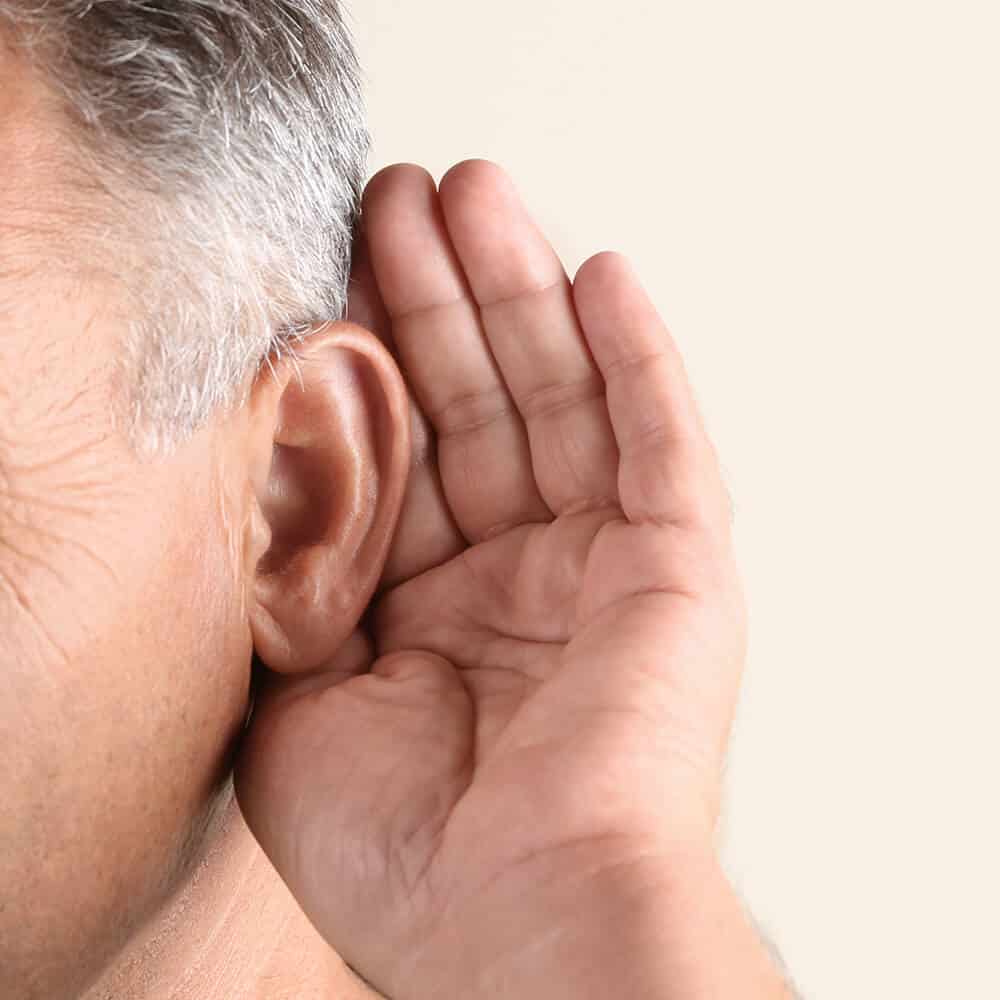Hearing Loss Overview
As an invisible condition, hearing loss is often overlooked. Yet, hearing loss is a lot more common than you might think. Roughly 40 million Americans of all ages struggle to hear, and seniors are even more likely to suffer from hearing loss. 1 in 3 adults over the age of 60 struggle to hear, and 50% of adults over 75 can’t hear clearly. This means that you also have a high chance of developing hearing loss, and learning all about your hearing is the best way to catch the signs of hearing loss as soon as possible.
Signs of Hearing Loss
You may think that you’d be the first person to know if you had hearing loss, but the truth is that your loved ones will often notice it before you do. After all, they interact with you often, and will see the changes from week to week. It’s harder for you to recognize the signs in yourself because hearing loss is gradual, and you’ll adjust to your new hearing level as it changes.
Signs of hearing loss include turning up the volume on the TV far too loud, and struggling to hear on the phone. You may not hear someone call to you from another room, and if you stop to think about it, you may realize you haven’t heard any birds singing for the past few months. You’ll also strain to follow conversations in places with a lot of background noise and may find yourself asking your friends and loved ones to repeat themselves as you try to make out what’s been said.
Types of Hearing Loss
There are three types of hearing loss, and the hearing loss you have will determine the most appropriate treatment method.
Sensorineural hearing loss, the most common type, is caused by damage to the delicate cells in the inner ear that are very sensitive to sound. The damage can be either the result of noise, known as noise induced hearing loss, or as part of the normal aging process, called presbycusis. The wear and tear of life can slowly affect the cells in your ear leading to a gradual breakdown of cells. Even though you think you can hear just fine, you’ll struggle to catch all the sounds, and this will make it especially difficult to follow conversations.
Conductive hearing loss is caused by damage to the outer or middle ear. It’s usually due to some kind of illness, injury, or infection that blocks the ear canal or damages the ear drum in the middle ear. Even a build up of ear wax can cause this type of hearing loss. If you have conductive hearing loss, sounds will sound muffled, as if someone has reached out and turned down the volume on all the sounds around you. This hearing loss often occurs very suddenly, and can start unexpectedly.
Mixed hearing loss is the third type of hearing loss, and it’s a combination of both sensorineural and conductive hearing loss. You may be struggling with a blockage in the outer ear due to a recent injury, but also have damage to the inner ear due to noise exposure.
The Benefits of Treat Hearing Loss
If you’ve recognized the signs of hearing loss, you need to take immediate action! Hearing loss is no joking matter, and the longer you live with untreated hearing loss, the worse your overall quality of life will be. When you have hearing loss, your close relationships suffer due to poor communication, and your work productivity drops since you spend so much of your time straining to hear instructions, or make mistakes because you weren’t able to hear clearly during a meeting.
Treating your hearing loss will bring a wealth of benefits, improving your quality of life, providing job security, and keeping you safe and aware whether you’re in the park with the grandkids, or driving to meet friends across town. You’ll enjoy a vibrant social life, and keep your brain active and healthy for years to come.
Have Questions for Altitude Audiology
Feel free to ask, click the button below to get answers.
Get in Touch Today

